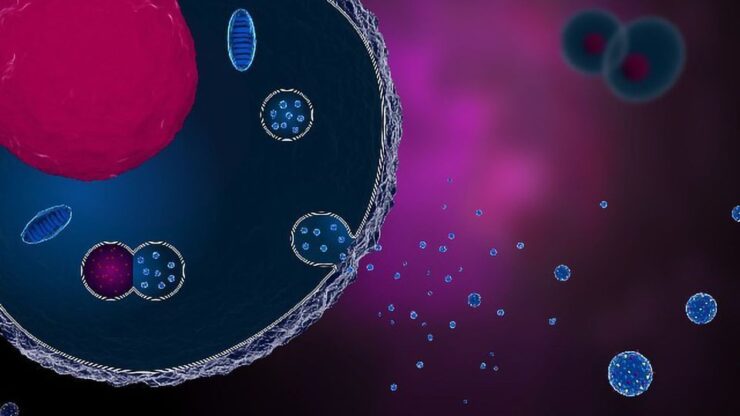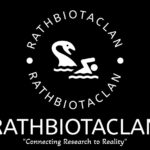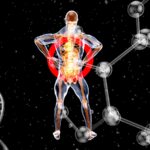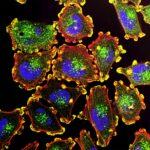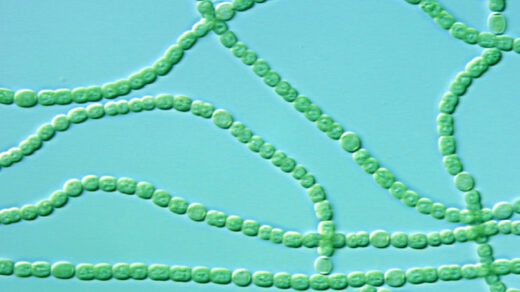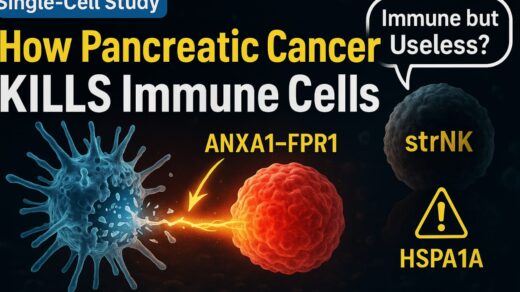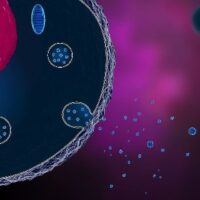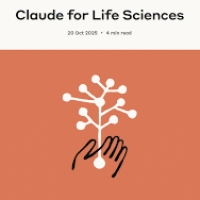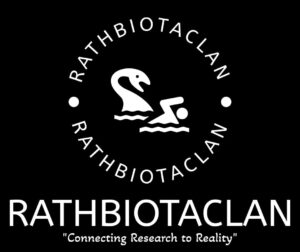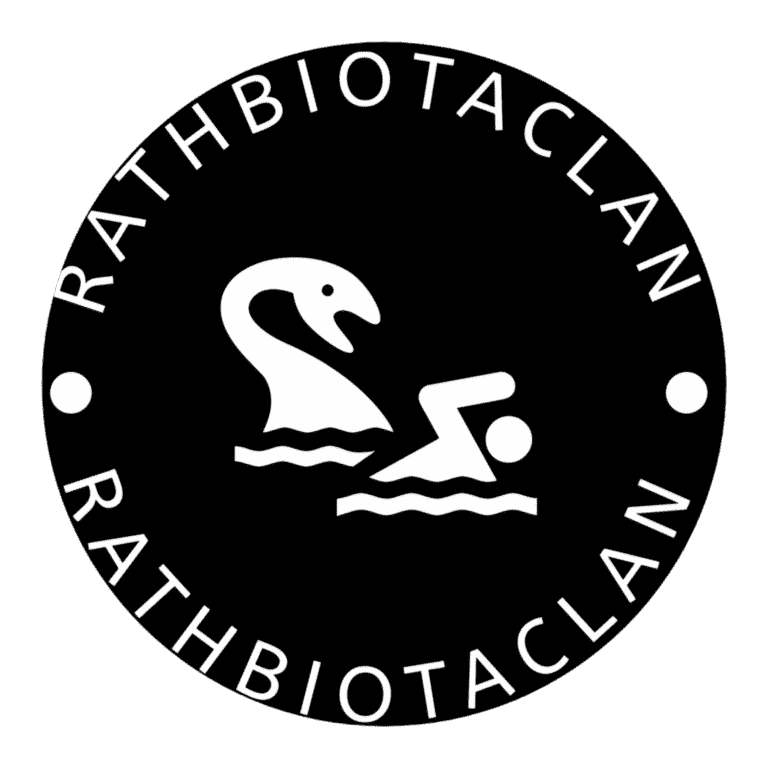For decades, the promise of stem cells has dominated regenerative medicine. These unique cells can self-renew and differentiate into various specialized cell types. The prevailing therapeutic model involved direct replacement. Doctors would introduce stem cells into damaged tissue, hoping they would engraft, multiply, and rebuild what was lost.
However, a revolutionary understanding is reshaping this paradigm. The primary healing power of stem cells may not lie within the cells themselves. Instead, it may be in the sophisticated messages they send. This has given rise to a new frontier: cell-free therapy using stem cell-derived exosomes.
The Messengers and the Message
To grasp this shift, we must first understand the key components. Stem cells, particularly Mesenchymal Stem Cells (MSCs), are master regulators of tissue repair and inflammation. Nearly all cell types, including stem cells, actively secrete exosomes. These are nano-sized extracellular vesicles (EVs), typically 30-150 nanometers in diameter.
Far from being simple cellular debris, these vesicles are intricate, naturally-formed nanoparticles. They have a lipid bilayer membrane that protects a dense cargo of bioactive molecules, including proteins, lipids, and nucleic acids. These exosomes serve as the primary couriers in a vital biological process: paracrine signaling.
Paracrine signaling is a form of local cell-to-cell communication. A cell releases signaling molecules that travel short distances to influence nearby cells. In regenerative medicine, stem cells act as command centers. They release swarms of exosomes carrying precise instructions to surrounding damaged or inflamed cells. These instructions can order a cell to stop programmed cell death (apoptosis), start proliferating, form new blood vessels (angiogenesis), or reduce an aggressive inflammatory response.
From Cell Transplant to Biologic Drug
Scientists had a watershed moment when they discovered that isolated exosomes could replicate many of the parent cell’s therapeutic effects. This realization marks a fundamental re-evaluation of the long-held “Paracrine Hypothesis.” It suggests the stem cell is not the final therapy. Instead, it is a sophisticated bioreactor that produces the true therapeutic agent: the exosome.
This conceptual leap from a “cell transplant” model to a “biologic drug” model is the core breakthrough. A cell transplant is a complex, living procedure. It is fraught with challenges like cell survival, engraftment, and immune rejection. A biologic drug, however, is a stable, non-living product. It can be purified, characterized, dosed, and administered with pharmaceutical precision.
This cell-free approach immediately addresses major safety and logistical hurdles of stem cell therapy. Exosomes are not living cells. They carry no risk of uncontrolled replication or malignant transformation. This has been a critical concern with certain stem cells. Furthermore, their simple surface is less likely to trigger an aggressive immune response from the host.
For years, the prevailing belief was that the therapeutic power of stem cells lay in their ability to engraft and differentiate into new tissue. However, a new understanding is emerging: much of the regenerative effect may be attributed not to the cells themselves, but to the powerful signaling molecules they release.
The implications of this paradigm shift are profound. It affects every aspect of the field, from manufacturing to regulation and clinical application. It opens the door to developing “off-the-shelf” regenerative therapies. These therapies are safer, more stable, and more consistent than their cellular predecessors. The breakthrough is not just a new treatment. It is the emergence of a more refined, controllable, and powerful therapeutic platform that harnesses the essence of stem cell communication to orchestrate healing.
How Do Exosomes from Stem Cells Actually Work to Heal the Body?
The therapeutic action of stem cell-derived exosomes lies in their complex and potent cargo, not the vesicles themselves. Exosomes function as nature’s own nanoscale delivery system. They transport a curated package of bioactive molecules from the parent stem cell directly into a target cell’s cytoplasm. This direct information transfer allows the exosome to reprogram the recipient cell’s behavior. It guides the cell toward a regenerative and anti-inflammatory state. This cargo’s combined effect orchestrates a complex healing response, instructing damaged cells to reduce inflammation, proliferate, and rebuild.
We can categorize the contents of this molecular payload into three main classes. Each class plays a distinct yet synergistic role in the healing process.
1. Nucleic Acids (The “Software Update”)
First and foremost are the nucleic acids, particularly microRNAs (miRNAs). These are small, non-coding RNA molecules that act as master regulators of gene expression. An exosome fuses with a target cell and releases its contents. These miRNAs can then bind to messenger RNA (mRNA) molecules inside that cell. This binding prevents the mRNA from being translated into proteins.
By silencing specific genes, miRNAs exert powerful control over cellular processes. For example, studies show that specific miRNAs from MSC-derived exosomes suppress inflammatory pathways. They also prevent cells from undergoing apoptosis and promote new blood vessel formation. All these actions are critical for tissue repair. The exosome essentially delivers a software update to the damaged cell. It overrides stress signals with new instructions for survival and regeneration.
2. Proteins (The “Hardware and Signals”)
The second critical component is a diverse array of proteins. This includes a rich cocktail of growth factors, cytokines, and other signaling proteins that directly stimulate cellular machinery. Key examples in MSC-derived exosomes include:
- Vascular Endothelial Growth Factor (VEGF): A potent stimulator of angiogenesis.
- Hepatocyte Growth Factor (HGF) and Fibroblast Growth Factor (FGF): These drive cell proliferation and migration.
- Transforming Growth Factor-beta ($TGF-\beta$): Crucial for tissue remodeling and wound healing.
- Interleukin-10 (IL-10): An anti-inflammatory cytokine that actively suppresses immune responses, creating a better environment for repair.
This protein payload acts as the immediate hardware for the regenerative process. It provides the direct signals needed to kickstart healing.
3. Lipids (The “Delivery Vehicle”)
Finally, the lipids forming the exosome’s outer membrane are not just a passive container. The specific composition of this lipid bilayer is essential for the vesicle’s stability and its journey through the body. It’s also key to its ability to fuse with target cells. Certain lipids on the exosome surface can even act as signaling molecules. They interact with receptors on recipient cells to initiate communication cascades.
To provide a clearer picture of this molecular machinery, the following table summarizes the key components of the exosomal cargo and their primary functions.
| Molecular Cargo Class | Specific Examples | Primary Biological Function |
| miRNAs | miR-21, miR-146a, miR-126 | Immunomodulation, Anti-apoptosis, Pro-angiogenesis |
| Proteins/Growth Factors | VEGF, HGF, $TGF-\beta$, FGF, IL-10 | Angiogenesis, Cell Proliferation, Tissue Repair, Anti-inflammatory |
| Lipids | Sphingomyelin, Ceramides, Cholesterol | Membrane stability, Cell signaling, Vesicle fusion |
| mRNAs | (Varies by source cell) | Transfer of genetic templates for protein synthesis in recipient cell |
By delivering this multi-faceted cargo directly where it is needed, stem cell-derived exosomes execute a sophisticated therapeutic strategy. They do not just provide a single growth factor. They deliver a comprehensive set of instructions that can simultaneously quell inflammation, protect cells from death, stimulate new growth, and remodel tissue. This orchestrates a holistic and powerful regenerative response.
Does the Type of Stem Cell Matter for Exosome Therapy?
Yes, absolutely. Viewing “exosome therapy” as a monolithic treatment is a critical misconception. An exosome’s therapeutic properties are a direct reflection of the parent cell that secreted it. In essence, an exosome is a molecular fingerprint of its origin.
The choice of the source stem cell is arguably the most crucial variable. It dictates the exosomal cargo’s composition. This, in turn, dictates its functional and therapeutic potential.
Common Sources: MSCs and iPSCs
Current research largely focuses on exosomes from Mesenchymal Stem Cells (MSCs). MSCs can come from various tissues, including bone marrow, adipose (fat) tissue, and umbilical cord tissue. They are renowned for their potent immunomodulatory and regenerative properties. Their exosomes are rich in anti-inflammatory cytokines, tissue-repair growth factors, and miRNAs that suppress damaging immune responses. This makes MSC-derived exosomes a versatile tool for conditions involving inflammation and tissue damage, like osteoarthritis.
However, other sources are emerging for specialized applications. Exosomes from Induced Pluripotent Stem Cells (iPSCs) are gaining attention. Scientists create iPSCs by reprogramming adult somatic cells (like skin cells) back to an embryonic-like pluripotent state. This technology offers the potential for creating patient-specific exosomes, eliminating immune reaction risks. Furthermore, scientists can expand iPSCs almost indefinitely in the lab. This provides a highly scalable and consistent source for exosome production. The cargo of iPSC-derived exosomes often promotes cell survival and proliferation. This makes them promising for conditions requiring robust tissue regeneration.
The “Source-Function-Application” Triad
The principle of “source dictates function” extends to more specialized progenitor cells. For instance, an exosome from a cardiac progenitor cell will naturally contain molecules tailored to support cardiomyocyte survival. This makes it a more logical choice for treating heart disease than a generic MSC-exosome. Similarly, exosomes from neural stem cells may contain unique neurotrophic factors ideal for treating neurodegenerative diseases.
This establishes a clear “Source-Function-Application” triad as the guiding principle. One would not use a skin-derived exosome to treat a neurological condition, just as one would not use a cardiac-derived exosome for cartilage repair.
The Challenge of Standardization and “Priming”
This therapeutic specificity transforms exosomes into a highly versatile platform. However, it also reveals the field’s Achilles’ heel: a profound lack of manufacturing standardization. An exosome’s contents depend on the cell type and the cell’s environment. Even minor variations in culture conditions—like growth media, oxygen levels, or inflammatory signals—can significantly alter the exosomal protein and miRNA profile. This variability makes it incredibly difficult to compare results between studies or even between batches from the same lab.
This challenge has led to the advanced concept of “priming” or “licensing” stem cells. Researchers are now intentionally manipulating the culture environment to bioengineer more potent exosomes. For example, exposing MSCs to a low-oxygen (hypoxic) environment can stimulate them to produce exosomes with more pro-angiogenic factors like VEGF. Similarly, “priming” them with inflammatory molecules like interferon-gamma can cause them to secrete exosomes with a more potent anti-inflammatory payload.
This demonstrates the exciting potential for creating “designer exosomes” for specific diseases. But it also underscores a fundamental variable. Scientists must precisely control this variable to turn exosomes from a biological phenomenon into a reliable, consistent, and approvable medicine.
What Are the Most Promising Therapeutic Applications for Exosome Treatments?
The unique properties of stem cell-derived exosomes have positioned them as a promising therapy across many medical fields. They can modulate inflammation, promote cell growth, and orchestrate tissue repair. Their small size, stability, and low immunogenicity allow for applications that are challenging for whole-cell therapies. This opens new avenues for treatment in dermatology, orthopedics, neurology, and beyond. Pre-clinical and early-clinical studies are generating a growing body of supportive evidence.
Dermatology and Aesthetic Medicine
Skin Rejuvenation
In dermatology, experts are heralding exosomes as a major advancement in skin rejuvenation. As skin ages, fibroblast activity declines. These cells produce collagen and elastin, leading to wrinkles and lost elasticity. Studies show MSC-derived exosomes directly stimulate fibroblast proliferation. They also significantly increase the synthesis of collagen, the skin’s primary structural protein. Applying them topically or via micro-injection can help restore the dermal matrix and improve skin texture and firmness.
In the context of skin aging, exosomes act as potent signaling agents, effectively reawakening dormant cellular machinery to restore a more youthful skin architecture.
Wound Healing
Beyond aesthetics, their role in wound healing is profound. In pre-clinical models, applying MSC-derived exosomes demonstrates accelerated wound closure. It also promotes new blood vessel formation (angiogenesis) within the wound bed. Finally, it reduces scar formation by modulating the inflammatory response. This makes them a compelling potential treatment for diabetic ulcers, burns, and other difficult-to-heal wounds.
Orthopedics and Sports Medicine
Orthopedics is another area of immense promise, particularly for degenerative joint diseases like osteoarthritis. This condition involves the progressive breakdown of cartilage and chronic joint inflammation. Studies show MSC-derived exosomes exert a dual-action effect here. First, they deliver a potent anti-inflammatory payload. This reduces inflammatory molecules in the joint, alleviating pain and slowing degeneration. Second, their cargo of growth factors and protective miRNAs can shield chondrocytes (cartilage cells) from apoptosis. They also stimulate them to produce new cartilage matrix components. Researchers are exploring intra-articular exosome injections as a minimally invasive treatment. The goal is to preserve joint function and delay the need for joint replacement surgery.
Neurology and Neurodegenerative Disease
Perhaps one of the most exciting frontiers is in neurology. A major obstacle in treating central nervous system (CNS) diseases is the blood-brain barrier (BBB). This highly selective membrane prevents most drugs and cells from entering the brain. Due to their nanoscale size and specific surface properties, exosomes have the remarkable ability to cross the BBB. This allows them to deliver therapeutic cargo directly to the site of injury or disease.
In pre-clinical models of stroke, traumatic brain injury (TBI), Alzheimer’s, and Parkinson’s, systemically administered exosomes show great promise. Studies show they reduce neuroinflammation, protect neurons from death, and promote neurogenesis and synaptic plasticity. By delivering neurotrophic factors and anti-inflammatory miRNAs directly into the brain, exosomes offer a novel strategy to combat these devastating conditions.
A Novel Drug Delivery Platform
Beyond their intrinsic therapeutic cargo, scientists are engineering exosomes as next-generation drug delivery vehicles. Scientists can load these natural nanoparticles with specific therapeutic agents. These include chemotherapy drugs, small interfering RNAs (siRNAs), or other small molecules. They can use them as “Trojan horses” to deliver these agents to specific cells. By modifying the exosome’s surface proteins, scientists can make them target and bind only to cancer cells, for example. This approach could dramatically increase a drug’s efficacy by concentrating it at the disease site. It would also reduce systemic side effects by avoiding healthy tissues. This dual capability highlights the exosome platform’s extraordinary versatility.
Is Exosome Therapy Better or Safer Than Traditional Stem Cell Transplants?
This critical question faces clinicians, researchers, and patients. Is this new cell-free approach genuinely superior to whole-cell transplantation? While “better” depends on the context, a direct comparison reveals compelling advantages for exosomes. This is especially true for applications focused on tissue repair and immunomodulation. The key benefits concern safety, logistics, and administration.
The Safety Advantage
The most significant advantage of exosome therapy is its vastly improved safety profile. The primary risk with pluripotent stem cells is uncontrolled replication. This can lead to tumors or teratomas. Exosomes are not living cells; they cannot divide or replicate. This completely eliminates the risk of tumorigenicity, a major shadow over regenerative medicine.
Furthermore, whole cells present a complex array of surface proteins. The host’s immune system can recognize these as foreign, leading to immune rejection and requiring immunosuppressive drugs. Exosomes have a relatively simple surface and low protein content. They have very low immunogenicity, minimizing the risk of adverse immune reactions.
The Logistical Advantage: An “Off-the-Shelf” Product
From a practical standpoint, the advantages are equally stark. Living stem cells are fragile. They require complex, stringent protocols for handling, shipping, and storage, often involving cryopreservation. This creates a complicated and expensive “cold chain” supply line.
Exosomes, as non-living vesicles, are far more stable. Scientists can store them for extended periods under less demanding conditions, like standard refrigeration or freeze-drying. This makes them a true “off-the-shelf” product. It simplifies the supply chain, reduces costs, and makes the therapy more accessible for widespread clinical use.
The Administration Advantage
The physical properties of exosomes also offer distinct advantages. Their nanoscale size allows for less invasive delivery, such as simple injections or even topical applications. Crucially, their ability to cross biological barriers like the blood-brain barrier unlocks therapeutic possibilities for neurological disorders. Whole-cell transplantation simply cannot achieve this.
The following table provides a direct, side-by-side comparison of these two therapeutic modalities.
| Feature | Whole-Cell Stem Cell Therapy | Stem Cell-Derived Exosome Therapy |
| Primary Mechanism | Direct cell replacement, Paracrine signaling | Purely paracrine signaling (cell-free) |
| Safety Profile | Risk of immune rejection, tumorigenicity, ectopic tissue formation | Low immunogenicity, no risk of cell replication/tumor formation |
| Immunogenicity | Moderate to High (requires matching or immunosuppression) | Very Low |
| Administration | Invasive (surgical implantation, IV infusion) | Less invasive (IV, topical, injection), can cross blood-brain barrier |
| Stability & Logistics | Requires cryogenic preservation, complex supply chain | More stable, easier to store, handle, and transport (“off-the-shelf” potential) |
| Manufacturing | Complex cell culture, difficult to scale, batch-to-batch variability | Potentially more scalable, but purification and standardization are major hurdles |
A Nuanced View: When Are Cells Still Needed?
It is important to maintain a nuanced perspective. Whole-cell therapy remains the necessary approach for conditions requiring true cell replacement and long-term engraftment. Examples include bone marrow transplants for leukemia or the theoretical replacement of dopamine-producing neurons in Parkinson’s disease.
However, for the vast number of diseases where the goal is to modulate inflammation, reduce cell death, and stimulate endogenous repair, exosome therapy emerges as a safer, more practical, and potentially more precise tool. These are the very functions governed by paracrine signaling. It refines the therapeutic strategy from a blunt instrument of cell replacement to a scalpel of molecular communication.
What Are the Biggest Challenges Facing Exosome Regulation and Clinical Use?
Despite immense promise, the path from lab discovery to clinical use faces significant challenges. These obstacles are not primarily scientific. The evidence for efficacy is compelling and growing. Instead, the challenges stem from the difficult intersection of manufacturing, standardization, and rigid pharmaceutical regulation. The field is navigating a “valley of death.” Promising technology must prove it can be produced and controlled with the same rigor as a conventional drug.
The core technical issues are the “Manufacturing Trilemma” of Sourcing, Standardization, and Scalability.
1. Sourcing
As discussed, an exosome’s therapeutic content directly reflects its parent cell and culture environment. This inherent variability is a major hurdle. A product from one donor’s MSCs may have a different potency than one from another. Even with the same cell line, minor changes in culture media or oxygen levels can alter the exosomal cargo. This leads to inconsistent product batches. Establishing well-characterized, stable master cell banks is a critical first step. However, controlling every variable in the cell culture process remains a formidable challenge.
2. Standardization
This is perhaps the most pressing technical barrier. Currently, no single, universally accepted “gold standard” method exists for isolating, purifying, and characterizing exosomes. Different groups use various techniques, including ultracentrifugation and size-exclusion chromatography. Each method has its own biases and efficiencies. This lack of a standard protocol makes it nearly impossible to compare data across studies or ensure product consistency.
Furthermore, the field urgently needs to develop and validate standardized potency assays. These are functional tests to reliably measure a batch’s biological activity. This would ensure each “dose” delivers a consistent therapeutic effect. Without this, dosing remains guesswork.
3. Scalability
Moving from lab-scale production to the vast quantities required for large-scale clinical trials is a monumental leap. Traditional cell culture methods are not easily scalable. Researchers are developing new technologies, such as bioreactors for 3D cell culture. However, achieving industrial-scale production of high-quality, pure exosomes remains a significant and costly engineering challenge.
The Regulatory Maze
These manufacturing hurdles feed directly into the second major obstacle: regulation. Regulatory bodies like the U.S. Food and Drug Administration (FDA) do not view exosome products as simple biologics. Because they are acellular products that exert a therapeutic effect, the FDA classifies them as drugs. This classification subjects them to the same long, arduous, and expensive approval pathway as any new pharmaceutical. The field’s manufacturing inconsistencies make it incredibly difficult to produce the consistent product required to even begin this rigorous process.
The Public Health Risk: An Unregulated Market
Unfortunately, bad actors have exploited this regulatory gap. This has led to a serious public health issue: the proliferation of an unregulated market. Numerous clinics are marketing and selling unproven “exosome therapies” outside of FDA oversight. These products are often of unknown origin, purity, and potency, posing significant risks to patients. The FDA has issued strong consumer warnings about these practices.
…we’re aware of a number of unscrupulous clinics that have emerged… these clinics prey on vulnerable patients, selling unproven and unapproved treatments…
This unregulated activity not only endangers patients but also threatens the legitimate scientific field. Serious adverse events from these unapproved products could lead to a public backlash. This could trigger a draconian regulatory crackdown, stifling innovation and investment for the legitimate companies working to bring safe and effective exosome drugs to market through proper channels. The biggest challenge, therefore, is a complex interplay of manufacturing science, regulatory policy, and market economics.
What Is the Final Verdict on the Future of Stem Cell Exosomes in Medicine?
Stem cell-derived exosomes stand at an exciting and disruptive frontier in regenerative medicine. They represent a paradigm shift away from complex, living cell therapies. They are moving us toward a more refined, controllable, and potentially safer class of biologic drugs.
The Promise
Exosome therapy distills the communicative essence of stem cells into a stable, “off-the-shelf” product. It holds the potential to address a vast array of unmet medical needs. These range from neurodegenerative diseases and osteoarthritis to chronic wounds and aesthetic rejuvenation. The core promise is powerful: delivering the healing power of stem cells without the risks of cell transplantation.
1st: Solving Key Challenges
However, the path from promise to clinical reality is not simple. The journey currently faces formidable challenges. These center on the critical need to solve the manufacturing trilemma of sourcing, standardization, and scalability. The ability to produce a consistent, potent exosome product at an industrial scale is the single greatest barrier to widespread adoption. This technical hurdle is inextricably linked to the rigorous demands of the pharmaceutical regulatory pathway. That pathway requires a level of product control that the field is still striving to achieve. The shadow of the unregulated market further complicates this landscape.
2nd: Bioengineered Exosomes
Looking forward, the future of this technology will likely involve increasing levels of sophistication and control. The next frontier is already emerging: bioengineered exosomes. This advanced approach involves genetically modifying the parent stem cells to produce exosomes with enhanced therapeutic properties. For example, scientists can engineer cells to overexpress specific therapeutic proteins or miRNAs. This effectively “super-charges” the exosomal cargo. Scientists can also modify them to display specific targeting ligands on the exosome surface. This guides them to bind exclusively to cancer cells, inflamed tissue, or specific neurons. This transforms exosomes from a harvested natural product into a truly programmable nanomedicine platform, capable of delivering highly targeted therapies.
Final Verdict
In conclusion, the verdict on stem cell exosomes is one of authoritative and cautious optimism. The scientific foundation is robust, and the therapeutic potential is undeniable.
While the journey from laboratory promise to clinical reality is fraught with challenges, stem cell-derived exosomes represent one of the most exciting frontiers in regenerative medicine. Their potential to deliver the healing power of stem cells in a safe, scalable, and ‘off-the-shelf’ format is a prize worthy of the rigorous scientific and regulatory pursuit it will require. The question is no longer if cell-free therapies will change medicine, but how quickly and how profoundly.

